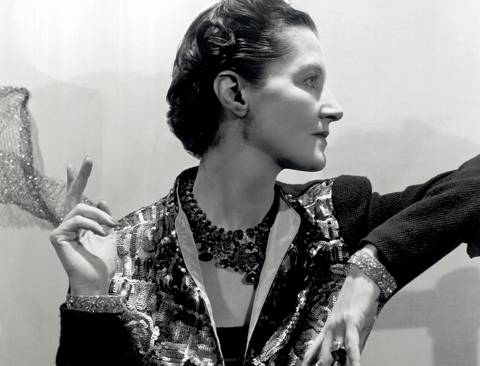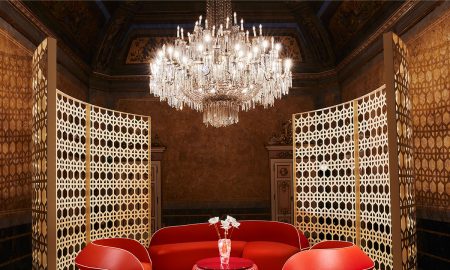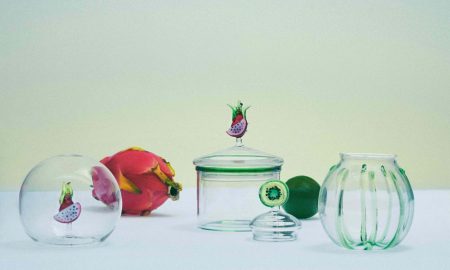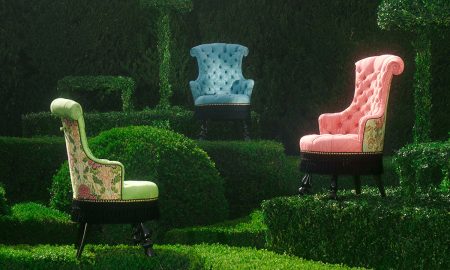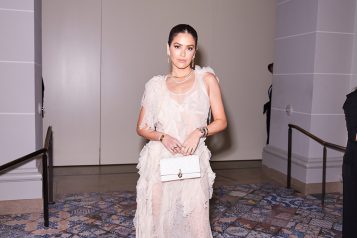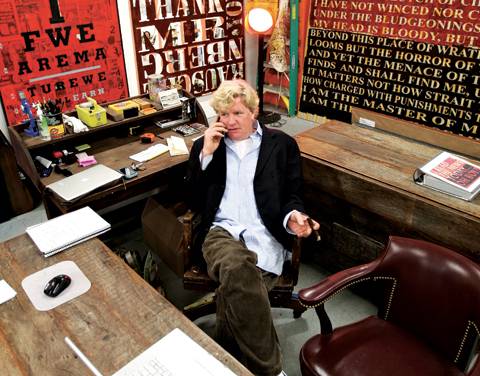
By Nicole Kotovos
Photography by Korinne Kotovos
Pop-Artist Peter Tunney has a lot to say, and he uses every medium possible to get his message across.
“People say that I go to work every day at 666 Fifth Avenue, and every day I get a new message. The time is always now, and it just makes me love going to work. I love that. It means the experiment is working.”
The Time is Always Now.
Not only the title of one of Peter Tunney’s works of art-a stencil on mixed canvas, his signature style-this is a motto that defines the pop artist’s actions. Few men live more in the present; he is where he is, right when it is, not yesterday, not tomorrow. His art reflects this. His life reflects this.
It’s a rich life, one that could (and should) fill the pages of an in-depth book that would wax on about virtually every topic under the sun. It’s a style Tunney himself is familiar with. Take, for example, our interview, which took place at The Experiment, his working studio and gallery at 666 Fifth Avenue. “Do you know this is the highest priced piece of real estate you are sitting in?” he quips. “They sold 49 percent of the ground floor of this building last year for $500 million. Forty-nine percent!” His mind shifts focus as he picks up a phone. “I’m gonna make a sales call here, live, because I have to,” he says to me, then into the phone: “You are all set, talk to me quickly, because I am doing an interview.”
The call goes on for a while. Names are thrown out, dollar amounts are tossed around, stories are told to the person on the other end for my benefit (quite the tale about a direct marketing tactic involving facial hair, a big fake mole, an eye patch, and a crooked mustache), and art crosses borders. Somehow, Tunney keeps track of it all in his head. “I know every deal from the beginning of time for all of my deals,” he says.
The Experiment exists because of Jared Kushner, owner of both the New York Observer and that pricey piece of real estate in which The Experiment sits. The duo forged a friendship when Kushner commissioned Tunney to create a “Don’t Panic” stencil over issues of the Observer. For years, Tunney would only show his work to a select clientele, but Jared had a vision. “He wanted to put this here as an experiment,” Tunney explains, “to see how this kind of operation would do. I so respect his vision to have a lively place like this in the base of his building. You know, it’s like an engine giving energy.”
Admittedly, there is a sort of thumping energy throughout the space, which is filled with various works of all sizes. It’s a welcoming place, meant to be a haven in the midst of the corporate buildings, an outlet for creativity. It is an experiment that is a success. “You have got to read some of the blogs about the PT Experiment,” he says. “People say that I go to work every day at 666 Fifth Avenue, and every day I get a new message. The time is always now, and it just makes me love going to work. I love that. It means the experiment is working.”
Not only is it working for Peter Tunney, it is working for Spirituality for Kids, a nonprofit that receives proceeds from The Experiment. SFK aims to give children an awareness of themselves, of others, and of the interconnectedness of all things so that they may grow up to become caring and responsible citizens of the world. Tunney could not feel more strongly about the cause. “The whole economic debacle that we’re in, and most of the problems we are suffering right now, if you really examine them, the base of that problem is a lack of spirituality. I would say that’s the beginning of the cascade of all these horrible events that are happening….We got to a place where people can’t be happy unless they are rich. It’s nonsense. I’m speaking from experience here, being the happiest guy in the world.”
He gets worked up, words flying out of his mouth so fast that it is hard to keep up with his ideas. They all seem to be coming down to a Shakespearean quote: “Before a joy proposed, behind a dream…” I realize now why at the top of his website is a list of words that try to describe Peter Tunney: Showman. Adventurer. Dilettante. Pontificator. Raconteur. Writer. Bon Vivant. Sign Maker. Card Shark. Story Teller. Magician. Curator. It might seem like a lot of labels for one man. But that’s because Tunney is a lot of man. He is constantly moving, thinking, striving, creating.
Words are not enough to describe this man, but words he has. So his art is full of words, stenciled phrases-some well known, others obscure-on canvases of newspapers, catalogues, advertisements, photographs, and more. He is constantly spouting out more quotes and phrases, some which will eventually hang on someone’s wall, others destined to drift into nothingness. “In this city you have to be crushed into dust then come back with a smile.” And “Nobody goes straight to the top.”
The constant theme of his message is of dreaming and hope. In the same vein as The Time is Always Now are pieces such as Nothing Happens Unless First a Dream and Change the Way You See Everything.
The event that changed everything for PT is distinctly defined: when he was 13 years old, he was hit by a car, effectively dead but brought back to life. He spent the next two years of his adolescence sitting in a hospital bed, not fully recovering for the next five. Rather than making him bitter about missed chances and memories never created, this made him an idealist who wants to share his vision with the world at large.
As for spirituality itself, he says this: “Religion is for people that don’t want to go to hell. Spirituality is for those of us that have been there.” Are they his words? He claims to be a procreator before admitting, “I just read that, but it’s a good one to know.”
While the messages he shares are not his original prose, the matter in which his art is created is entirely unique and compelling. He will take a simple phrase such as “There Are No Accidents In The Universe” and paint it on the dented hood of a car-so are there no accidents? Was this particular accident destined?
The goal is to get your mind going at least at half the speed of his own. He is constantly moving to create the next great piece of art. It’s been like this his whole life; he has created hundreds of diaries over the years that represent his travels. He filled the pages with photographs, scraps of papers, leaves, a vinyl record-anything that would remind him of the moment he had experienced. While he may not have known it at the time, these objects were destined to be the canvas for his later works. Many of these diaries are now on display at The Experiment.
More recently, he has been the curator of the longest-running photography exhibits in New York City. “I’ve had at least one major art show up everyday since 1991, that’s a lot of heavy lifting.” Presently, The Wild Horses of Sable Island, which features photos by Roberto Dutesco, has been operating at 13 Crosby Street for three years and counting. The show funds numerous charities and causes, including The Humane Society, Green Horse Society, Beth Israel Hospital, SoHo Partnership, and more. Prior to that, his last show with Peter Beard, on Broome Street, lasted seven years.
Following The Experiment will be a different kind of experiment. The show will be titled Peter Tunney Making Money. “I am going to skip making art and go directly to making money,” he claims. Tunney money, not unlike funny money, will be a beautifully pained wooden box.
He keeps talking. He told me it would be like this, he talks, I listen, and the article emerges while he speaks. It is emerging. To sum up the way that the art world feels about the experiment, the way I feel about my conversation with Tunney, happens to be the only word on his new business card:
Gratitude.








